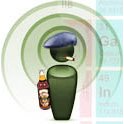The fairies at the bottom of my garden have been digging up the pot of gold at the end of the rainbow. A spokesdog for the Society of Wolves tells me that Canis Lupus is no longer dining on geriatric homeowners nor juvenile females in crimson headgear. Oh, and there is no link between sugar in the diet and diabetes.
The first two statements may seem a little far-fetched but that last one, surely it’s a fairy story…
Well, apparently not. In a press release posted on AlphaGalileo by the UK’s Sugar Bureau, new evidence from researchers at the Royal Victoria Hospital and Queen’s University Belfast suggests that receiving a quarter of daily calories from sucrose (sugar) as part of a balanced, weight-maintaining diet does not result in any difference in insulin resistance compared to getting 10% of the same number of calories from sucrose.
The press release states, that “It has long been suspected that a high sugar diet over a long term period may lead to an increased risk of developing diabetes. But there has been little or no evidence to support this idea, with studies on the role of any aspect of the diet in the development of diabetes difficult to conduct.”
So, is this the evidence we’ve all been waiting for?
The research, published by Steven Hunter and colleagues in the journal Diabetes points to sugar’s innocence. “Sugar has traditionally been linked to the development of diabetes,” he says, “These findings challenge that thinking, and show that intakes of more than double that currently recommended do not appear to have an adverse effect on markers of diabetes risk.”
But, let’s take a closer look at this little story from the Sugar Bureau. The trial studied the effects of different amounts of sucrose in the diets of 13 healthy men without diabetes over a period of six weeks.
Thirteen volunteers? Six weeks?
How can they draw any serious conclusions from such a tiny sample tested over such an incredibly short period? Where is the data on sucrose intake for hundreds if not thousands of people over several years of sucrose abuse? While there is evidence that saturated fat intake and obesity are closely linked to diabetes risk, this single very small study cannot seriously claim that sugar intake has no effect on diabetes risk. How can they tell in a month and a half with just 6 or 7 men being fed a larger amount of sugar in their diet?
I don’t doubt the researchers’ integrity, but this news, coming as it does from the Sugar Bureau, does smack of sickly sweet spin to my cynical eye. It doesn’t tell us anything about the long-term effect of repeated blood sugar spikes caused by excessive intake nor about the effects of aging on sucrose processing and the harmful cross-links it can form with body proteins.
It’s a story that will have the tooth fairy rubbing its hands in glee as well as giving anyone with a penchant for two desserts the impression that they can get away with a large amount of sugar in their diet without having to worry about diabetes. I find it hard to imagine a happy ever after for this story.
What do you think? Should organisations or companies that promote a particular product be allowed to fund scientific research into the benefits or otherwise of that product?
 Breast cancer remains the most common form of cancer among women but screening with mammography involves exposure to ionising radiation and suffers from a high rate of false positives that then require a definitive assay. In the December issue of the journal Biopolymers, researchers in India describe how Raman spectroscopy might be used to discriminate between normal, benign, and malignant breast tissue and so provide a simple and relatively non-invasive complement to a suspicious mammogram.
Breast cancer remains the most common form of cancer among women but screening with mammography involves exposure to ionising radiation and suffers from a high rate of false positives that then require a definitive assay. In the December issue of the journal Biopolymers, researchers in India describe how Raman spectroscopy might be used to discriminate between normal, benign, and malignant breast tissue and so provide a simple and relatively non-invasive complement to a suspicious mammogram.  Asthma sufferers, non-smokers, and those who really just don’t care for passive-smoking-induced lung cancer can breathe a long sigh of relief as England follows other enlightened states and places a ban on smoking in enclosed public places, such as pubs, clubs, and restaurants, from July 1, 2007.
Asthma sufferers, non-smokers, and those who really just don’t care for passive-smoking-induced lung cancer can breathe a long sigh of relief as England follows other enlightened states and places a ban on smoking in enclosed public places, such as pubs, clubs, and restaurants, from July 1, 2007.
 New, healthier alternatives to processed food starches with a lower GI, or glycaemic index, may soon be on the menu, thanks to scientists in China and the US. The researcher have begun to unlock the secrets of starches that make dehusked grains, potatoes, and processed foods such as biscuits and breakfast cereals less healthy compared with low GI foods. Their statistical analysis of starchy data could lead to new processed carbohydrates that do not cause the worrying blood sugar spikes associated with conventional processed starch.
New, healthier alternatives to processed food starches with a lower GI, or glycaemic index, may soon be on the menu, thanks to scientists in China and the US. The researcher have begun to unlock the secrets of starches that make dehusked grains, potatoes, and processed foods such as biscuits and breakfast cereals less healthy compared with low GI foods. Their statistical analysis of starchy data could lead to new processed carbohydrates that do not cause the worrying blood sugar spikes associated with conventional processed starch. Arterial plaques represent a "death zone" within the artery in which white blood cells that would otherwise clear away such fatty deposits are killed before they can do their job.
Arterial plaques represent a "death zone" within the artery in which white blood cells that would otherwise clear away such fatty deposits are killed before they can do their job.